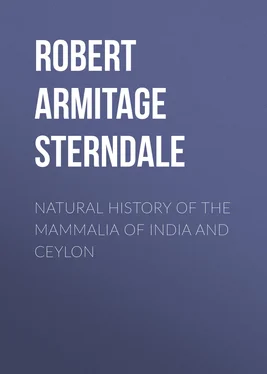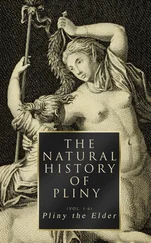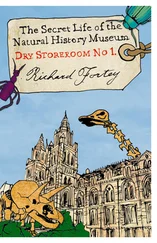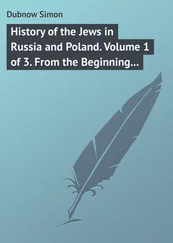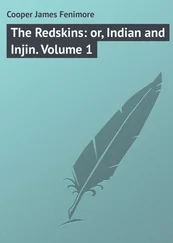Robert Armitage Sterndale - Natural History of the Mammalia of India and Ceylon
Здесь есть возможность читать онлайн «Robert Armitage Sterndale - Natural History of the Mammalia of India and Ceylon» — ознакомительный отрывок электронной книги совершенно бесплатно, а после прочтения отрывка купить полную версию. В некоторых случаях можно слушать аудио, скачать через торрент в формате fb2 и присутствует краткое содержание. Жанр: foreign_edu, Биология, на английском языке. Описание произведения, (предисловие) а так же отзывы посетителей доступны на портале библиотеки ЛибКат.
- Название:Natural History of the Mammalia of India and Ceylon
- Автор:
- Жанр:
- Год:неизвестен
- ISBN:нет данных
- Рейтинг книги:5 / 5. Голосов: 1
-
Избранное:Добавить в избранное
- Отзывы:
-
Ваша оценка:
- 100
- 1
- 2
- 3
- 4
- 5
Natural History of the Mammalia of India and Ceylon: краткое содержание, описание и аннотация
Предлагаем к чтению аннотацию, описание, краткое содержание или предисловие (зависит от того, что написал сам автор книги «Natural History of the Mammalia of India and Ceylon»). Если вы не нашли необходимую информацию о книге — напишите в комментариях, мы постараемся отыскать её.
Natural History of the Mammalia of India and Ceylon — читать онлайн ознакомительный отрывок
Ниже представлен текст книги, разбитый по страницам. Система сохранения места последней прочитанной страницы, позволяет с удобством читать онлайн бесплатно книгу «Natural History of the Mammalia of India and Ceylon», без необходимости каждый раз заново искать на чём Вы остановились. Поставьте закладку, и сможете в любой момент перейти на страницу, на которой закончили чтение.
Интервал:
Закладка:
This animal was placed by Linnæus among the Ursidæ , and is classed by some with the Melididæ , but its dentition is more that of the Martens, which occupy the next group. The true Glutton ( Gulo luscus ) is not known in India, but we have some so-called Wolverenes ( Helictis ) to which I shall presently allude. Still a few remarks about the typical animal, which is by no means an uninteresting creature, may not be out of place. The Glutton inhabits a wide tract of country in the Northern Hemisphere, the colder regions of Europe, Asia, and America; it is abundant in Siberia and Kamschatka, and is the pest of the trappers in North America. Fabulous stories were told of this animal in olden days, some of which are still propagated at the present time. It was supposed to be of insatiable appetite, and to attack its prey (deer, &c.) by dropping down from the branch of a tree on to the back of its victim, and to eat its way into a vital part, whilst being carried along—a decided fallacy, for neither the Glutton nor our Indian species of Helictis are arboreal in their habits. Then it was accused of eating to such a pitch of distention that it had to squeeze itself between two close-growing trees for relief ere it returned again to the repast. There is no doubt, however, that it is to a great extent voracious and extremely cunning; and what it cannot eat it will carry off and hide. The trappers complain bitterly of it, and spare no pains to kill every one they can come across; but it is not easily to be caught, and only a very cunningly-devised bait will succeed.
Were I to relate some of the stories recorded of this animal I might get accused, if not of being a romancer myself, at all events of being a too credulous propagator of other people's romances. It is told of it that it will discover hidden stores, and, digging them up out of the snow, carefully smooth the surface over again; that it will avoid every trap set for itself, and, going round to the back of spring guns, gnaw through the string connected with the trigger before it drags away the bait. It follows up the lines laid down by the trappers, taking the martens out, and devouring them, or hiding what it cannot eat, and by wearying out the patience of the hunters, compel them to strike a new "marten-road."
It is said by Dr. Coues to possess a singular habit of sitting down on its haunches, shading its eyes with a forepaw, and gazing earnestly at the approaching enemy before it takes to flight. I have already alluded to the Cape ratel doing this on the look-out for bees. The Indian form of Wolverene is a slighter and much smaller animal, with a still more weasel-like appearance. The Glutton is comparatively a large beast, the body being about 2½ feet, and the tail 10 inches; the Helictis is only half the size, and there is a slight difference in the dentition.
"Head tapering; nose acute, conical; muzzle bald, obliquely truncated; other side hairy, with a central groove; nostrils inferior; ears ovate; body slender; legs short; toes 5·5; front claws elongate, curved; hinder short and acute; sole of foot hairy behind, bald in front, and rhombic for half the length of the foot, with three large oblong pads on the front, and three small ones on the hinder edge; toes elongate; thumb short; fur black, like Herpestes ; tail moderate, sub-cylindrical; teeth, 38; premolars, 4—4/4—4; grinders, 5/6."—Gray.
There are four species of this genus, and of these two come within the geographical limits of these papers, viz., Helictis Nipalensis and H. moschata ; the third, H. orientalis , belongs to Java; and the fourth, H. subaurantiaca , to Formosa.
NATIVE NAME.— Oker , Nepalese; Kyoung-pyan , Arakanese.
HABITAT.—Nepal, Arakan, and Pegu.
DESCRIPTION.—Hodgson, who first described this animal in the 'Journal of the Asiatic Society of Beng.' (vol. v. pp. 237-38), says: "Above earthy brown; below, with the edge of the upper lip, the insides of the limbs, and terminal half of the tail, yellow; a white mesial stroke from the nape to the hips, and a white band across the forehead, spreading on the cheeks, and confluent with the pale colour of the animal's lower surface; head and body vermi-formed; digits and nails of the anterior extremities stronger; half way from the os calcis to the fingers hairy; fur of two sorts and abundant, but not lengthened, nor harsh, nor annulated; tail cylindrico-tapered, pointed, half the length of the animal." He goes on to add: "The anterior limbs are decidedly fossorial, and the hinder suited for walking in a sub-plantigrade manner; both wholly unfitted for rapatory or scansorial purposes."
SIZE.—Head and body 16 inches; tail 7½ inches, 9 inches, including hair.
The habits of this animal are nocturnal. Swinhoe mentions this in his account of the Formosan species, and Dr. Anderson relates that he is aware that the Nepal one is similar in its ways, and that it not unfrequently enters Bhotia huts at night; and on one occasion he killed one in a Bhotia hut, thinking it was a large rat, greatly to the chagrin of his host, who informed him that the animal was in the habit of visiting him nightly, and was most useful in destroying cockroaches and other insects.
HABITAT.—China, also Burmah (Pegu, Yunnan).
DESCRIPTION.—Similar to the last, but differing in dentition and the formation of certain points in the skull. The teeth are smaller, and the infra-orbital foramen much larger. Both the above species are noted for long skulls and palate, whereas H. orientalis has a short skull and palate. The following are the chief characteristics:—
Short head and palate, large teeth, small infra-orbital foramen = H. orientalis .
Long head and palate, large teeth, small infra-orbital foramen = H. Nipalensis .
Long head and palate, small teeth, large infra-orbital foramen = H. moschata .
Dr. Anderson obtained a specimen of this species at an elevation of 5000 feet, at Teng-yue-chow in Yunnan.
In India the members of this family are restricted to the Weasels and Martens, but in other countries are included the Grisons, Zorillas, Skunks, &c. They are small animals of elongated form, with short legs, commonly expressed as vermiform; where the head of a weasel will go his body will follow—at least that was my experience in my boyish days, when I was particularly interested in vermin, and the gamekeeper was my first instructor in natural history. The face is rounded like a cat, but the skull behind the eye is very long and pear-shaped when viewed from above; in proportion to a cat's skull the brain case is a fourth longer. They are most sanguinary in their habits, and their agility is great, so on the whole they are most formidable to many animals, not only smaller, but in many cases four times their own size. The ferocity of the common weasel ( Putorius vulgaris ) ought to be as proverbial as its watchfulness. A case has been known of a kite carrying off one of these animals, but falling dead after a time with the large blood-vessels under the wing cut through by the savage little prisoner, who, on reaching terra firma , escaped apparently unhurt. I think in Wolff's admirable 'Illustrations of Natural History' this fact, related by Bell, is made the subject of a picture called "Catching a Tartar."

Most of the animals of this group are eagerly sought for on account of their fur. In Northern India the skin of one species, probably a variety of Martes abietum , is sold in the bazaars at Peshawur and Lahore. In 1868 I bought sufficient to line a large overcoat, which proved most comfortable in travelling in the cold weather in the Punjab, as well as in subsequent wanderings on the European continent in winter.
Читать дальшеИнтервал:
Закладка:
Похожие книги на «Natural History of the Mammalia of India and Ceylon»
Представляем Вашему вниманию похожие книги на «Natural History of the Mammalia of India and Ceylon» списком для выбора. Мы отобрали схожую по названию и смыслу литературу в надежде предоставить читателям больше вариантов отыскать новые, интересные, ещё непрочитанные произведения.
Обсуждение, отзывы о книге «Natural History of the Mammalia of India and Ceylon» и просто собственные мнения читателей. Оставьте ваши комментарии, напишите, что Вы думаете о произведении, его смысле или главных героях. Укажите что конкретно понравилось, а что нет, и почему Вы так считаете.
